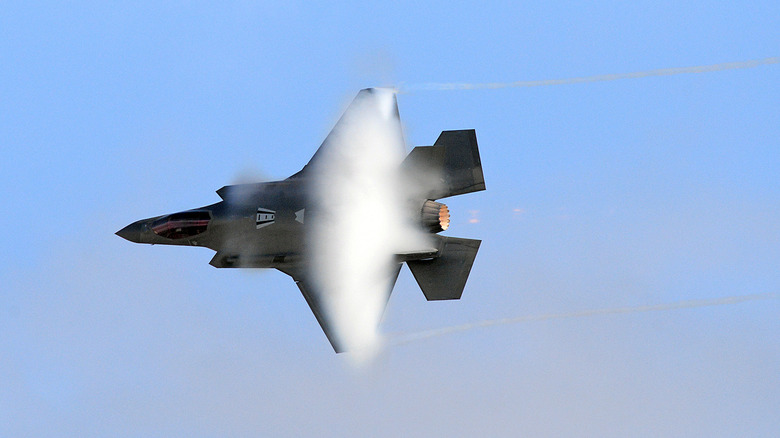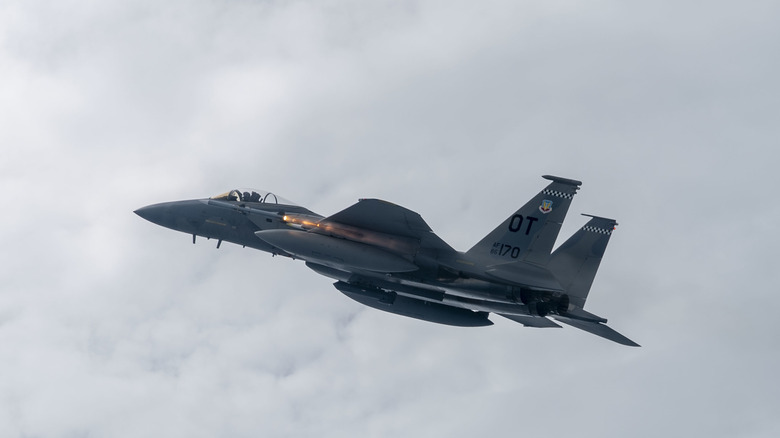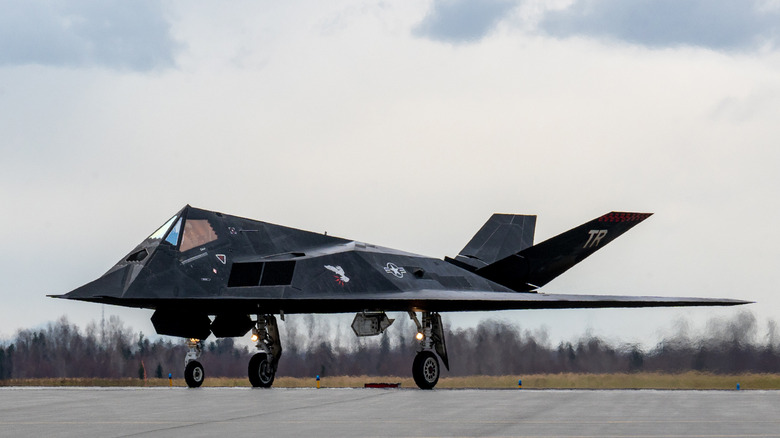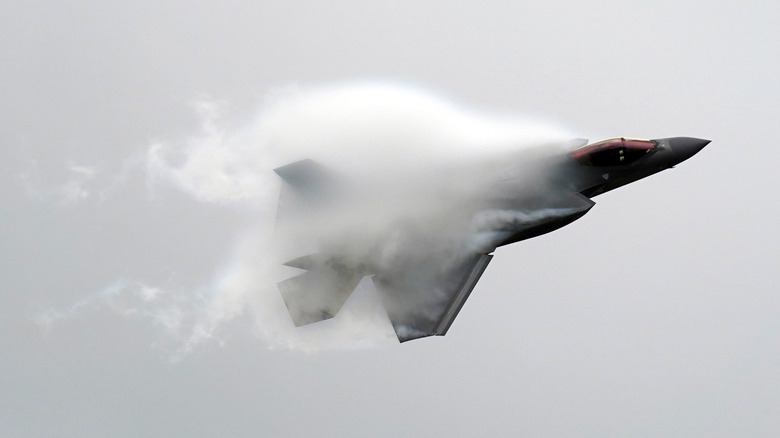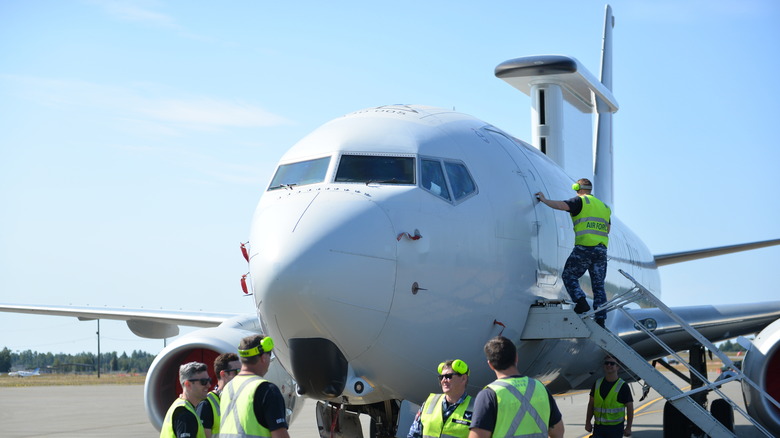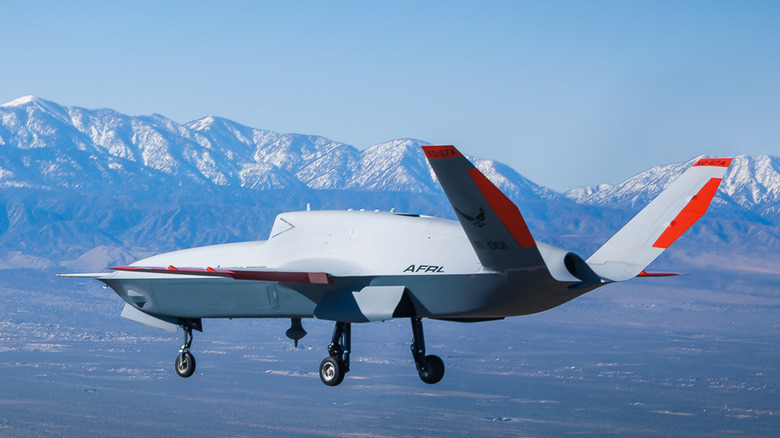Stealth Vs. Speed: A Look At Trade-Offs In Modern Fighter Jet Design
Air combat has radically changed since the dogfights of World War II. Even after guided air-to-air missiles arrived in the late 1940s, most aerial engagements throughout the late 20th century still occurred within the pilots' visual range. But in the 21st century, aerial warfare looks very different.
According to the Center for Strategic and Budgetary Assessments, air combat is skewing more toward beyond-visual-range (BVR) engagements, rather than the gun-against-gun fights of old. This trend is the result of many things: Smarter air-to-air missiles capable of engaging targets at standoff ranges, advanced sensors, and radars allowing pilots to identify and lock onto far-off targets, and so on.
However, what truly set in motion this quiet revolution in aerial combat is the appearance of stealth fighter jets, including the likes of the U.S F-22 Raptor, the Chinese Chengdu J-20 Fagin, or the Russian Su-57 Felon. Their low observability means they can bypass enemies' sensors and radars, ambush unsuspecting flights using missiles from afar, and then retreat to safety. Nowadays, fighter jets rarely need to "switch to guns" against other aircraft outside close air support (CAS) missions.
With classic dogfighting now de-emphasized, this begs the question: Do modern stealth fighters still need extreme speed or super-maneuverability? Or do they only need maximum stealth?
The modern way of aerial combat
In a dogfight, if you defend perfectly against an attacker executing their attack perfectly, you would lose every time. In the past, your attacker would be another pilot in a fighter aircraft. Today, more often than not, the threat comes from a missile hurtling towards you.
Evading these modern air-to-air missiles is extremely difficult, even with countermeasures like chaff, flares, or electronic countermeasures (ECM.) For instance, the Russian R-77 missile can fly at Mach 4 and make sharp, high-G maneuvers that would knock a human pilot unconscious. Outmaneuvering or out-speeding it is nearly impossible.
For this reason, the CBSA has noted that traditional fighter jet attributes like speed and maneuverability are taking a back seat to stealth, payload capacity, and range. These latter three qualities would prove decisive in high-end conflicts where not only enemy fighter jets are patrolling, but also integrated air defense systems (IADS) are active, as is currently the case in Ukraine.
Fortunately, engineers and military planners have long recognized this shift. The F-35, for example, has a top speed of just Mach 1.6 compared to the F-22's Mach 2.2. While less maneuverable than its predecessors, the F-35 packs advanced sensors, decent stealth capabilities, and lethal stand-off weapons like the proposed hypersonic MAKO missile. These features allow it to dominate in exercises against simulated near-peer adversaries and, hopefully, it should be able to do the same in real combat conditions as well.
Does stealth really impair speed and aerodynamics?
Short answer: Generally, no. The misconception that a stealth aircraft's speed and aerodynamics are affected by its ability to sneak mostly stemmed from the quirks of the F-117 Nighthawk — the first operational aircraft to incorporate a very low observability (VLO) design.
When the F-117 was developed, stealth technology was still in its infancy, and engineers had to make trade-offs to achieve VLO. For instance, at supersonic speeds, the airframe would heat up, increasing its infrared signature and making it vulnerable to heat-seeking missiles. As a result, the F-117 was limited to subsonic speeds and lacked an afterburner. The pilot also has to avoid maneuvering too much, since it can change the jet's radar cross section (RCS) and makes it more visible on radar.
Next, the radar-deflecting edges and angles of the airframe made the Nighthawk extremely aerodynamically unstable. In fact, without an automated fly-by-wire system giving minute corrections in flight, the jet wouldn't be able to fly at all.
However, these trade-offs were mainly due to the technological limitations of the time. The F-117 was designed using slide rules and napkin calculations, long before computer-aided design (CAD) became mainstream. As stealth technology matured and engineers gained a better understanding of its principles, these issues were resolved. The F-22 Raptor, for example, maintained stealth superiority for two decades while boasting supercruise and super-maneuverability capabilities.
Speed and maneuverability are still important, just less so
While raw speed is no longer the sole determining factor in modern air combat, it remains crucial for a fighter jet's responsiveness. To quickly intercept and neutralize potential threats before they can cause harm, speed is essential. If a fighter runs out of ammunition against a superior adversary, the ability to swiftly disengage and return to base (RTB) is also vital for the pilot's survival.
Maneuverability is equally important. Although dogfights like those in "Top Gun" are unlikely, the more agile a jet is, the better it can evade incoming threats. During the Gulf War in 1991, an F-16 pilot famously dodged six Iraqi surface-to-air missiles by maneuvering alone, highlighting the enduring relevance of speed and agility in the heat of battle.
However, some argue that with stealth fighters like the F-35 and advanced stand-off weapons, pilots may never find themselves in such perilous situations ever again. This is a hypothetical stance, but it's not without merit. The Pentagon has indeed been hard at work developing its combat systems, future airframes, and weapons to these specs.
More sensors and stand-off weapons are the Pentagon's answer
JADC2, or Joint All Domain Command and Control, has become a buzzword in defense circles, representing the Pentagon's ambitious vision of interconnecting all combat units — sea, air, land, and space — into a unified network. This would enable seamless coordination, allowing an F-15EX fighter jet to tap into the sensor data of a nearby E-7 Wedgetail radar plane via data link, and engage targets detected by the E-7 without revealing its own position. This networked warfare approach, combined with the Air Force's rapidly advancing stand-off weapons, could mean future jets may no longer need to get up close and personal with their targets.
For air-to-air engagements, the AIM-260 Joint Advanced Tactical Missile (JATM) is speculated to have a range exceeding 120 miles. In the air-to-surface role, the Stand-in Attack Weapon (SiAW) can strike targets between 96 and 120 miles away. For maritime strikes, the AGM-158C Long Range Anti-Ship Missile (LRASM) boasts a 200-nautical-mile range. Additionally, glide bombs like the Joint Stand-off Weapon (JSOW), Small Diameter Bomb (SDB), and Stormbreaker can accurately hit hardened targets from significant distances.
With such long-range precision munitions at their disposal, a successful engagement may no longer hinge on who has the fastest and most nimble planes in the skies — just ones with the farthest-firing guns and the smartest "brains."
Drones are also part of the new calculus
The proliferation of drones in the 21st century has also transformed the battlefield, not just on the ground, but also in the air. The U.S. military has shown significant interest in developing low-cost, attritable drones that can keep its personnel as far from danger as possible, while still maintaining lethality.
The Air Force plans to fly its Off-Board Sensing Station (OBSS) drone — the XQ-67A Valkyrie — alongside the F-35 and future aircraft as a "loyal wingman." These drones can use infrared search and track (IRST) systems or radars to detect stealthy targets from a distance, streaming data back to the pilot. When flown together with a weapon-armed variant of the OBSS, called fittingly the Off-Board Weapon Station (OBWS), the pilot may even engage targets via the drone without having to intervene personally at all.
And if an XQ-67A drone is shot down? No problem — the F-35 can simply turn around and disengage if the situation becomes too risky. Its stealth and stand-off capabilities provide a crucial advantage, even if it's not as fast as an F-22. After all, enemies can't catch what they can't detect in the first place.
